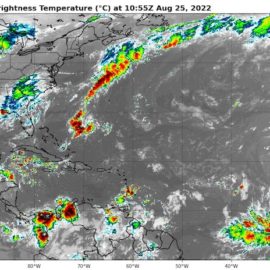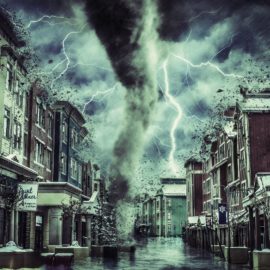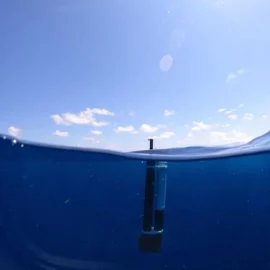
Those of us who have been here especially for the past two years know what to do. But the first 5 years here we had none and the only flooding was dud to rain. We lost a car. So even old timers may need a check up on what to do.
Welcome to New Orleans and your first hurricane season. We’ve seen your questions in our inboxes and on social media, and we have answers for you about what to expect and what to do when there’s a storm threat. Here’s our beginner’s guide for hurricane season with explanations about common terms, evacuation guidance and expert preparation tips. Hurricane season starts June 1 and ends Nov. 30, but storms can form any time. August and September are historically the busiest times for hurricanes, especially strong ones. The hardest thing about planning is that each storm is different, and your personal situation factors into the plan. But, there are things that most long-time residents of New Orleans know that you should as well.
nola.com
There are common terms used by NOAA, the city and the residents.
Let’s start at the very beginning with common terms you might hear like “Cat 5.” Storms start as invests and can progress to tropical depressions all the way up to a Category 5 hurricane. Here are the categories on the Saffir-Simpson Hurricane Wind Scale in order of increasing strength: Tropical depression: up to 38 mph, Tropical storm: 39 to 73 mph, Category 1 hurricane: 74 to 95 mph, Category 2 hurricane: 96 to 110 mph, Category 3 hurricane (major hurricane): 111 to 129 mph, Category 4 hurricane: 130-156 mph and Category 5 hurricane: 157 mph and higher. You’ll hear people say “Cat 1” or “Cat 2.” That means a Category 1 or Category 2 hurricane. A Category 3 storm is a major hurricane and is often the threshold for when residents will leave town voluntarily. Mandatory evacuations can be issued, depending on the severity of a storm. Here’s a video that shows the damage caused at different wind strengths. (Can’t see it? Watch here.)
The Gulf and the Hurricane Center are also common references.
The Gulf of Mexico, often called “the Gulf,” is the body of water south of Louisiana. Tropical systems can develop in the Gulf and move toward land. They also can develop in the Caribbean or the Atlantic. When a storm is in the Gulf, residents are usually on high alert. The National Hurricane Center, based in Miami, is the main forecasting agency for hurricane season. Information also comes from the National Weather Service in Slidell. The National Hurricane Center will release a five-day track when a tropical depression has formed or is about to form. The graphic includes a shaded area that is often called the cone. It’s where the center of the storm is expected to move, but effects of the storm often are felt well outside the cone, depending on the size of the storm. This is the cone for what eventually became Hurricane Ida in 2021.

image via National Hurricane Center
There are other common terms.
A watch means something is possible, and a warning means it is an imminent threat. A warning is more serious and designates more urgency. In terms of hurricane season, forecasters issue tropical storm and hurricane watches and warnings, based on when tropical storm-force winds will arrive. Storms can change the water level and push water well inland, on top of regular high tides. This is particularly a problem in coastal areas not protected by levees. The National Hurricane Center issues separate storm surge watches and warnings for areas outside the hurricane levee systems, and the National Weather Service will update those if the hurricane levees are likely to be overtopped. If you live on the water, prepare for water levels to rise abnormally due to storms. Storm surges range from several inches to more than 20 feet. Read more about storm surge. Most of metro New Orleans is protected by a levee and floodwall system. The system, comprised of massive walls, earthen mounds and floodgates, is designed to protect the city from flood waters and storm surge. The system failed during Hurricane Katrina, causing massive flooding. More than $14 billion has been spent on upgrades since then, but some storms of Category 3 or greater intensity could still cause overtopping of the new levees. Here’s where the levees and floodwalls are. Read more about the levee system.

On your street are drains that are connected to catch basins.
A storm drain is the metal grate on streets where rain is funneled off the surface and into a catch basin. Storm drains often get blocked by leaves and trash and should be checked before storms to make sure they are clear. Residents usually clear off the drains near their homes. Parish crews are responsible for removing the covers and cleaning the catch basins underneath, which get clogged. If the storm drain by you is not draining during regular thunderstorms, report it to the parish so it can get fixed. In New Orleans and elsewhere in south Louisiana, mechanical pumps play a key role in preventing flooding. They are important because much of the region is below sea level, which means rain that flows into catch basins must be pumped into pipes and canals, and then through or over levees, so it can leave the area. The Sewerage and Water Board operates the interior pumps in New Orleans and has struggled with mechanical problems, power source issues and operator errors. Before storms, the SWB usually updates the public about its pump status. Drainage departments for Jefferson, St. Bernard and St. Charles parishes also operate pump stations and issue updates before storms. The east and west bank levee authorities operate pumps at the ends of drainage canals that pump water into Lake Pontchartrain or the Barataria Basin.
If your street flodds then you don[t want your car parked on it. Neutral ground parking is allowed.
The neutral ground is the large grassy median in the center of avenues and boulevards, such as Napoleon Avenue and Claiborne Avenue. When flash flooding is forecast, city officials will lift parking restrictions, which means you can park your vehicle on the neutral ground, which is higher than street level and less prone to flash flooding. Don’t block streetcar tracks, intersections or sidewalks if you are parking on higher ground.
If it is a
Cat 3 or higher evacuation is one of the options. If a city wide evacuation is called you will hear the term contraflow.
Contraflow is an evacuation plan that uses all lanes of the interstate in one direction. On the east side of New Orleans, all lanes will funnel traffic east, and all traffic on the west side will go west. Interstate 55 and the Causeway will be one-way north. Officials usually will issue evacuation requests or orders for areas outside the levee system first and then begin contraflow before issuing mandatory evacuations for areas within the levee system, such as New Orleans. When a storm is heading for New Orleans and southeast Louisiana, the biggest question for everyone is whether to stay or evacuate. If officials say to leave, then you need to leave. A mandatory evacuation means all residents and visitors must leave. A voluntary evacuation means you can leave if you want, but it isn’t required. Another term is “shelter in place.” That means officials want you to stay home or in another safe facility and ride out the storm. You should have supplies with you and stay off the roads in this situation. If a mandatory evacuation is not ordered, it’s up to you to decide to evacuate or shelter in place. Factors to weigh: Storm threats, including strong winds and potential for flooding, Your personal situation, including your location and your family’s health, Ability to evacuate, Power outages that might last for days and Lack of public services. Many residents will stay for tropical storms and leave for storms that are at least Category 2 or 3, but again, each storm is different. Stay weather aware during hurricane season. Hurricanes don’t pop up overnight, and you usually have least 48 hours’ notice. But, tracks change and storms can intensify quickly, so be prepared to move fast or hunker down if the forecast changes unexpectedly. If you choose to stay, old-timers say to keep a hatchet in your attic, just in case unexpected flooding requires an emergency escape from your home. Here’s the city’s guide for other things to have if you choose to shelter in place.
These are the questions you need to ask your self and you need to answer!
Do you have transportation, a place to go and money for evacuation expenses? Sometimes it is easier to get out of town than to deal with the aftermath of a storm if you have the means. Do you have medical conditions or a life situation (for example, small children) that would make it hard to live without air conditioning in the summer heat? Storms often knock out power for several days. Some people have generators, but many require gas, which may or may not be available. If you or your loved ones wouldn’t be able to tolerate an extended power outage, consider leaving. Does your house flood during a regular thunderstorm? Storms often dump several inches of rain and cause flooding. Do you have supplies to last at least a week? When storms hit, trees are often knocked down, blocking roads. Stores are closed and lines to get gas are long. Prepare now for storms by gathering nonperishable food, water, flashlights, power sources, important paperwork, etc. Here’s a timeline for what to do now. If you do evacuate, tell your family and friends where you are going. Posting on social media also helps so people can check your status there instead of draining your phone battery by calling and texting you.
This is a rough timeline you can expect. Ida as a storm wasn’t bad for me but the power outage was and it was an unusual time out. We evacuated because of the power outage.
It’s the beginning of hurricane season and storms can develop, but “high alert” time usually happens in August. What should you be doing now? Get emergency texts. Officials send out emergency text alerts in New Orleans during hurricane season in addition to other severe weather threats. Sign up by texting NOLAREADY to 77295. Make a plan. If a large, dangerous storm heads our way, where will you go? How will you get there? What will you take? What do you need to do to secure your home before evacuating? If the storm doesn’t require evacuation, what do you need at your house to ride out the storm? Are family members aware of your plans? Do you have elderly relatives that will have to be picked up before you leave? Gather supplies and check your emergency equipment, such as flashlights, generators and storm shutters. Here’s a full list of what to include in your kit. Get important paperwork and backups for digital files. Put everything in a place that’s easy for you to locate in case you need to leave quickly. Do car maintenance now. Check your tires and the spare. If a storm comes and you plan to evacuate, you won’t have time to get that brake job you’ve been putting off. Reduce freezer items. Lots of locals limit food in their freezers during hurricane season. Start cooking meals now from the contents of your freezer before storms come. Take photographs of your house’s exterior, car and everything in your home in case you have to file an insurance claim. Prep your home. Trim your trees, and consider storm shutters or panels. Here are more tips. Check with your landlord. If you rent, talk with your landlord about their expectations. Will they be boarding up windows or adding sandbags? Will you?
These are good to know items.
Get a good manual can opener with big ergonomic handles. Do not get one of those old-fashioned little metal ones. You want to be able to easily access your nonperishable food. During hurricane season, do not let the gas gauge in your car fall below half full, and if a storm is in the Gulf, top off your tank every day. If you have to evacuate, you will need a full tank of gas, as gas stations may be closed for 150 miles or more. Get a car charger for your cell phone now if you don’t have one. If you stay in town and the power is out, you can charge your phone in your car – and run the air conditioner in it, too.
The fact that people live here tells you that you can survive!



